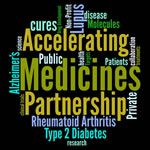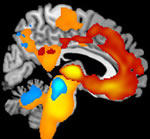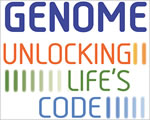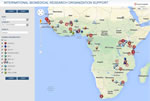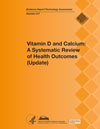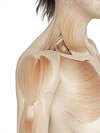Spotlight
Letter from Dr. Stephen I. Katz: Introducing the Accelerating Medicines Partnership Network in Rheumatoid Arthritis and Lupus
In my April letter, I wrote about a new program to speed research that will lead to new diagnostics and therapeutics for the autoimmune diseases rheumatoid arthritis (RA) and lupus. I am pleased to report that the launch of the Accelerating Medicines Partnership (AMP) RA/Lupus Network was announced on September 24, 2014. This innovative initiative draws on the strengths of the public sector, industry and academic institutions to address many of the barriers that have impeded autoimmune disease research. In this month’s letter, I will discuss a few of the exceptional aspects of this multisector, “team science” effort that aims to transform our understanding of and research on autoimmune diseases.
Image: Stephen I. Katz, M.D., Ph.D.
News
NIH Announces Network To Accelerate Medicines for Rheumatoid Arthritis and Lupus: Partnership Includes Support From Industry and Nonprofits
The National Institutes of Health (NIH) has awarded grants to 11 research groups across the United States to establish the Accelerating Medicines Partnership in Rheumatoid Arthritis and Lupus (AMP RA/Lupus) Network. Launched in February 2014, the NIH AMP Program is a public-private partnership developed to transform the current model for identifying and validating the most promising biological targets for the development of new drugs and diagnostics. Through a competitive process, the AMP RA/Lupus Network Leadership Center and Research Sites were selected, and $6 million of first-year funding was awarded on September 24, 2014. The network will implement the goals of the broader AMP RA/Lupus Program.
NIH Immunologist Elected to Institute of Medicine
John J. O’Shea, M.D., scientific director of the NIAMS, has been elected to membership in the Institute of Medicine (IOM) of the National Academy of Sciences. The announcement was made on October 20, 2014, at the IOM’s 44th annual meeting in Washington, D.C. For 2014, 70 new members and 10 foreign associates were chosen.
NIH Funds Research Consortia To Study More Than 200 Rare Diseases
Physician scientists at 22 consortia will collaborate with representatives of 98 patient advocacy groups to advance clinical research and investigate new treatments for patients with rare diseases. The collaborations are made possible through awards by the NIH—totaling about $29 million in fiscal year 2014 funding—to expand the Rare Diseases Clinical Research Network, which is led by NIH’s National Center for Advancing Translational Sciences (NCATS).
Image: Brain tissue loss associated with Frontotemporal Lobar Degeneration. Photo credit: S. Dutt, H. Rosen, A. Boxer.
NIH Invests Almost $32 Million to Increase Utility of Biomedical Research Data
Wide-ranging NIH grants will develop new strategies to analyze and leverage the explosion of increasingly complex biomedical data sets, often referred to as Big Data. These NIH multi-institute awards constitute an initial investment of nearly $32 million in fiscal year 2014 by NIH’s Big Data to Knowledge initiative, which is projected to have a total investment of nearly $656 million through 2020, pending available funds.
NIH Common Fund Announces 2014 High-Risk, High-Reward Research Awardees: NIH To Fund 85 Awards To Support Highly Innovative Biomedical Research
Eighty-five grants have been awarded to scientists proposing highly innovative approaches to major contemporary challenges in biomedical research under the High-Risk/High-Reward program supported by the NIH’s Common Fund. Awardees from previous years have made scientific leaps, established new scientific paradigms and, in some cases, revolutionized entire fields.
New Supplemental Awards Apply Sex and Gender Lens to NIH-Funded Research: Investment Sets the Stage for a Transformative Shift in Science
The NIH has invested $10.1 million in supplemental funding to bolster the research of 82 grantees to explore the effects of sex in preclinical and clinical studies.
NIH Awards Aim To Improve Understanding of Cell Pathways, Development of New Therapies
Building on a successful three-year pilot project, the NIH has awarded more than $64 million to six research institutions to create a database of human cellular responses, the Library of Integrated Network-based Cellular Signatures. Discovering such cell responses will improve scientists’ understanding of cell pathways and aid in the development of new therapies for many diseases.
NIH Funds Next Phase of Tissue Chip for Drug Screening Program: Scientists Will Integrate Chips Mimicking Human Organ Functions Into Full Body System To Evaluate Drugs
The NIH will award funds to support the next phase of its Tissue Chip for Drug Screening program to improve ways of predicting drug safety and effectiveness. Researchers will collaborate over three years to refine existing 3-D human tissue chips and combine them into an integrated system that can mimic the complex functions of the human body. Led by the NCATS, the program will support 11 institutions at $17 million in 2014, with additional support over the remaining two years if funds are available.
Image: A neurovascular unit on a chip being developed by Vanderbilt University researchers. Photo credit: John Wikswo, Vanderbilt University.
NIH and VA Address Pain and Related Conditions in U.S. Military Personnel, Veterans and Their Families: Research Will Focus on Nondrug Approaches
Thirteen research projects totaling approximately $21.7 million over five years will explore nondrug approaches to managing pain and related health conditions, such as post-traumatic stress disorder, drug abuse and sleep issues. The effort seeks to enhance options for the management of pain and associated problems in U.S. military personnel, veterans and their families.
Genome Exhibition Departs Smithsonian for Multicity Tour: Enthusiasm for Genomics Grows With an Estimated 3 Million D.C. Visitors to Exhibition
With eye-catching models, interactive displays and engaging elements, the Genome: Unlocking Life’s Code exhibition is going on tour after having completed a 14-month engagement at the Smithsonian’s National Museum of Natural History in Washington, D.C.
Take a Look at the Science Research Supported by Federal Funders
Frequent readers of the “Rock Talk” and the Extramural Nexus know that RePORT is the first stop on the way to finding information about NIH-funded research, as well as data on trends in NIH funding and the biomedical workforce. But now, the NIH is collaborating with other agencies to create Federal RePORTER, a single Web portal that allows users to search federal-funded science projects across multiple agencies. Though the site is still in alpha testing, it has recently added a new partner agency’s data.
Updates to World Research Reporting Tool – World RePORT
An article published in Science discusses the value of creating a global map of health R&D activity to improve coordination of research and create a “global observatory” for health research. It is a timely reminder about the world research reporting tool discussed in March 2013.
NIH Director’s Blog
 Creative Minds: The Muscle-Brain Connection
Creative Minds: The Muscle-Brain Connection
There’s mounting evidence that exercise has a powerful effect on the human brain. For example, many studies have shown that physical activity appears to reduce the incidence of depression. Exercise can also delay or possibly even prevent Alzheimer’s disease, as well as easing symptoms in people who have these disorders. But how, exactly, does getting our legs moving and our hearts pumping exert a positive influence on our brain
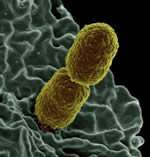 New Strategies in Battle Against Antibiotic Resistance
New Strategies in Battle Against Antibiotic Resistance
Over the past year, the problem of antibiotic resistance has received considerable attention, with concerns being raised by scientists, clinicians, public health officials and many others around the globe. Antibiotic-resistant bacteria are found not only in hospitals, but in a wide range of community settings. In the United States alone, these bacteria cause roughly two million infections per year, and 23,000 deaths.
Image: Antibiotic-resistant bacteria interacting with a human white blood cell. Photo credit: National Institute of Allergy and Infectious Diseases.
Other Federal News
Three Encouraging Steps Towards New Antibiotics
The federal government has taken several actions to address the growing need for new antibiotics. For instance, in an FDA Voice blog, Food and Drug Administration (FDA) Commissioner Margaret A. Hamburg discussed the president’s national strategy for Combating Antibiotic Resistant Bacteria (CARB) and the FDA’s collaboration with a wide variety of organizations to address this issue. Another blog also recently talked about the FDA’s work on the Generating Antibiotics Incentives Now Act (GAIN Act), the Antibacterial Drug Development Task Force, a public meeting, a Federal Register Notice and multiple guidance documents, all aimed at building up the nation’s arsenal of effective antimicrobial drugs.
Healthy People 2020 Invites You To Comment on Proposed New Objectives
Public comments are a cornerstone of Healthy People 2020. To ensure that Healthy People 2020 reflects current public health priorities, you are invited to comment on proposed new objectives to be added the topic area of arthritis, osteoporosis and chronic back conditions. The comment period is from October 20, 2014, through November 7, 2014.
The Agency for Healthcare Research and Quality Technology Assessment Program: Negative Pressure Wound Therapy Technologies for Chronic Wound Care in the Home Setting
The Agency for Healthcare Research and Quality (AHRQ) Technology Assessment Program provides technology assessments for the Centers for Medicare & Medicaid Services (CMS). These technology assessments are used by CMS to inform its national coverage decisions for the Medicare program as well as provide information to Medicare carriers. The program recently published a new report, Negative Pressure Wound Therapy Technologies for Chronic Wound Care in the Home Setting [PDF - 1.7 MB].
AHRQ: Fifth Journal Supplement on Research Methods: Patient-Centered Health Outcomes in Rare Diseases
An AHRQ-sponsored journal supplement that explores innovative research methods for studying health outcomes in rare diseases is now available online from AHRQ and the Journal of General Internal Medicine. The supplement includes more than 15 articles on important research being done in the United States and abroad to improve methods for studying health outcomes in people with rare and complex diseases, a patient community increasingly recognized in primary care and in health policy discourse.
NEW PUBLICATIONS AND PRODUCTS
 NIAMS Patient Experiences: Lupus Patient Video
NIAMS Patient Experiences: Lupus Patient Video
Liliana, who is living with lupus, shares her experiences as a patient at the NIH Clinical Center.
Updated Lupus Publications Now Available
The NIAMS has updated one publication on lupus, in both English and Spanish:
- Living With Lupus: Health Information Basics for You and Your Family
- Cómo vivir con lupus: Información básica de salud para usted y su familia
Complementary Health Approaches for Chronic Pain
The National Center for Complementary and Alternative Medicine’s (NCCAM’s) recent Clinical Digest summarizes current scientific evidence about the complementary health approaches most often used by people for chronic pain, including fibromyalgia, headache, irritable bowel syndrome, low-back pain, neck pain, osteoarthritis and rheumatoid arthritis.
Updated Review Report from the AHRQ: Vitamin D and Calcium
The AHRQ’s Effective Health Care Program announced the availability of Vitamin D and Calcium: A Systematic Review of Health Outcomes (Update) [PDF - 11.5 MB]. The AHRQ sponsors the development of evidenced-based reports to assist public- and private-sector organizations in their efforts to improve the quality of health care in the United States.
NIH Research Matters
NIH Research Matters is a review of NIH research from the Office of Communications and Public Liaison, Office of the Director, NIH.
Diet Affects Autoinflammatory Disease via Gut Microbes
In autoinflammatory diseases, the innate immune system, for unknown reasons, becomes activated and triggers inflammation. This part of the immune system is the body’s rapid first line of defense against infection. The short-term heat, swelling and redness of inflammation are a normal part of the body’s protective response to injury or infection. But prolonged inflammation can seriously damage the body.
Image: Prevotella in gut is linked to inflammation. Photo credit: Yamanaka et al., courtesy of BMC Microbiology, 2009, 9:11.
Controlling Muscle Repair
When skeletal muscle becomes damaged, the regeneration process involves a specialized population of cells called satellite cells. These cells normally lie dormant inside adult muscle. In response to injury or exercise, they become active and divide. Some satellite cells mature to replace the damaged muscle tissue, while others serve to replenish the pool of cells available for future repair.
NIH News in Health
Read practical health information in NIH News in Health, which is reviewed by the NIH’s medical experts and is based on research conducted either by the NIH’s own scientists or by its grantees at universities and medical schools around the country.
MEETINGS
NIH Office on Women’s Health Workshop: Methods and Techniques for Integrating the Biological Variable “Sex” in Preclinical Research
Monday, October 20, 2014, from 7:45 a.m. to 5:30 p.m.
NIH Campus, John Edward Porter Neuroscience Building (Building 35)
View Draft Agenda [PDF - 83 KB]
View Workshop Videocast Archive
NIH Annual Interdisciplinary Women’s Health Research Symposium: “Sex Differences Methodology and Reporting”
Thursday, November 6, 2014, 8 a.m. to 4 p.m.
NIH Campus, Masur Auditorium, NIH Clinical Center (Building 10)
Registration is available here. View Symposium Videocast
Vitamin D: Moving Toward Evidence-based Decision Making in Primary Care
Tuesday, December 2, 2014, from 8:00 a.m. to 5:00 p.m., and
Wednesday, December 3, 2014, from 8:00 a.m. to noon
NIH Campus, Natcher Auditorium (Building 45)
Cost: Free
View Draft Agenda [PDF - 193 KB]
Registration is available here.
Videocast registration is available here.
NIH Pathways to Prevention Workshop: Advancing the Research on Myalgic Encephalomyelitis/Chronic Fatigue Syndrome
Tuesday, December 9, 2014, from 8:30 a.m. to 4:30 p.m., and
Wednesday, December 10, 2014, from 8:30 a.m. 3:45 p.m.
NIH Campus, Natcher Auditorium (Building 45)
Cost: Free
View Draft Agenda
Registration is available here.
Videocast registration is available here.
Webinar To Connect Applicants to NIH Peer Review Experts
The NIH Center for Scientific Review (CSR) has designed four webinars to give new NIH grant applicants and others useful insights into the submission and review processes. CSR is the portal for NIH grant applications and their review for scientific and technical merit. Each webinar will run from 2:00 p.m. to 4:00 p.m. EST, and will include a 30-minute Q&A period. The four webinars are:
- AREA Awards for Less Resource-Intensive Institutions (November 4)
- Fellowships (November 5)
- Small Business (November 7)
- Research Project R01 (November 10)
Visit the CSR webinar website to reserve a space.
NIH Wednesday Afternoon Lecture Series
The NIH’s Wednesday Afternoon Lecture Series offers weekly lectures every Wednesday at 3 p.m. in Masur Auditorium, Building 10, NIH Campus. Renowned scientists from around the globe present research on a variety of topics. The lectures are Continuing Medical Education-certified, open to the public and available live via webcast.
Upcoming Lectures:
October 29, 2014
The Annual DeWitt Stetten, Jr., Lecture
Ron Vale, University of California, San Francisco
“The Mechanisms of Cytoskeletal Motor Proteins”
November 5, 2014
K. Christopher Garcia, Stanford University
“Tuning Cytokine Receptor Signaling with Natural and Engineered Ligands”
NIH Science Lectures and Events Available via Internet
The NIH hosts a number of science seminars and events that are available online through real-time streaming video. You can watch an event at your convenience as an on-demand video or a downloadable podcast. Most events are available to all; a few are broadcast for the NIH or the U.S. Department of Health and Human Services and are marked as such. See additional details on events.
FUNDING ANNOUNCEMENTS
NIAMS Announcements
NIH Common Fund Initiative Announcement
Nuclear Organization and Function Interdisciplinary Consortium (NOFIC) (U54)
(RFA-RM-14-006)
Letter of Intent Receipt Date: November 16, 2014
Application Receipt Date: December 16, 2014
Nucleomics Tools (U01)
(RFA-RM-14-007)
Letter of Intent Receipt Date: January 2, 2015
Application Receipt Date: February 2, 2015
Study of Nuclear Bodies and Compartments (U01)
(RFA-RM-14-008)
Letter of Intent Receipt Date: January 2, 2015
Application Receipt Date: February 2, 2015
4D Nucleome Imaging Tools (U01)
(RFA-RM-14-009)
Letter of Intent Receipt Date: January 2, 2015
Application Receipt Date: February 2, 2015
4D Nucleome Network Organizational Hub (U01)
(RFA-RM-14-010)
Letter of Intent Receipt Date: November 16, 2014
Application Receipt Date: December 16, 2014
4D Nucleome Network Data Coordination and Integration Center (U01)
(RFA-RM-14-011)
Letter of Intent Receipt Date: November 16, 2014
Application Receipt Date: December 16, 2014
Data Integration and Analysis Tools: Accessible Resources for Integration and Analysis of Carbohydrate and Glycoconjugate Structural, Analytical, and Interaction Data in the Context of Comparable Gene, Protein, and Lipid Data (R34)
(RFA-RM-14-012)
Letter of Intent Receipt Date: November 10, 2014
Application Receipt Date: December 10, 2014
Novel and Innovative Tools to Facilitate Identification, Tracking, Manipulation, and Analysis of Glycans and Their Functions (U01)
(RFA-RM-14-013)
Letter of Intent Receipt Date: November 10, 2014
Application Receipt Date: December 10, 2014
Novel and Innovative Tools to Facilitate Identification, Tracking, Manipulation, and Analysis of Glycans and Their Functions (R21)
(RFA-RM-14-014)
Letter of Intent Receipt Date: November 10, 2014
Application Receipt Date: December 10, 2014
Facile Methods and Technologies for Synthesis of Biomedically Relevant Carbohydrates (U01)
(RFA-RM-14-015)
Letter of Intent Receipt Date: November 10, 2014
Application Receipt Date: December 10, 2014
Model Organisms Screening Center for the Undiagnosed Diseases Network (UDN) (U54)
(RFA-RM-14-016)
Letter of Intent Receipt Date: November 16, 2014
Application Receipt Date: December 16, 2014
Other Funding Announcements
Notice of National Biosafety Stewardship Month and Health and Safety Requirements for NIH Grantees
(NOT-OD-14-127)
Implementation of the NIH Genomic Data Sharing Policy for NIH Grant Applications and Awards
(NOT-OD-14-111)
NIH Genomic Data Sharing Policy
(NOT-OD-14-124)
Notice of OBSSR’s Participation in PAR-13-374 “Modeling Social Behavior (R01)”
(NOT-OD-14-123)
Public Comments on Proposed Guidance Regarding Significant Changes to Ongoing Animal Activities
(NOT-OD-14-125)
Guidance on Significant Changes to Animal Activities
(NOT-OD-14-126)
eRA Commons Username Required for Sponsor in Individual Fellowship Grant Applications to NIH and AHRQ
(NOT-OD-14-129)
Notice of Correction in Due Dates for PAR-14-315 “Testing Interventions for Health-Enhancing Physical Activity (R01)”
(NOT-OD-14-130)
Notice of Correction to PA-14-335 “Advancing Interventions to Improve Medication Adherence (R21)”
(NOT-OD-14-131)
Notice of Availability of Frequently Asked Questions (FAQs) and Updated Address for Paper-Based Submissions for PA-14-320
(NOT-OD-14-132)
Review of Grants Information for Fiscal Year 2014
(NOT-OD-14-138)


